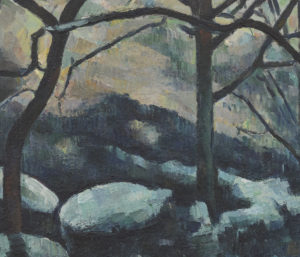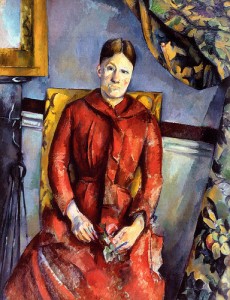
Cézanne Photographic
How to represent—or, better, to create—“sensation” in a painting? The challenge was to introduce the experience of external and internal simultaneously. Further complication: the demand would have to be met without losing the active presence of the living artist, that is, without reducing the process to a mechanism. A problem for photography: even when it exhibited blur, it suffered the slur of appearing mechanistic. A satisfying image of nature would need to incorporate, on the one hand, nature’s essential animation, and, on the other hand, the animation associated with the living, sensing being of the artist—the artist as both sensing nature and recording this sensation.



